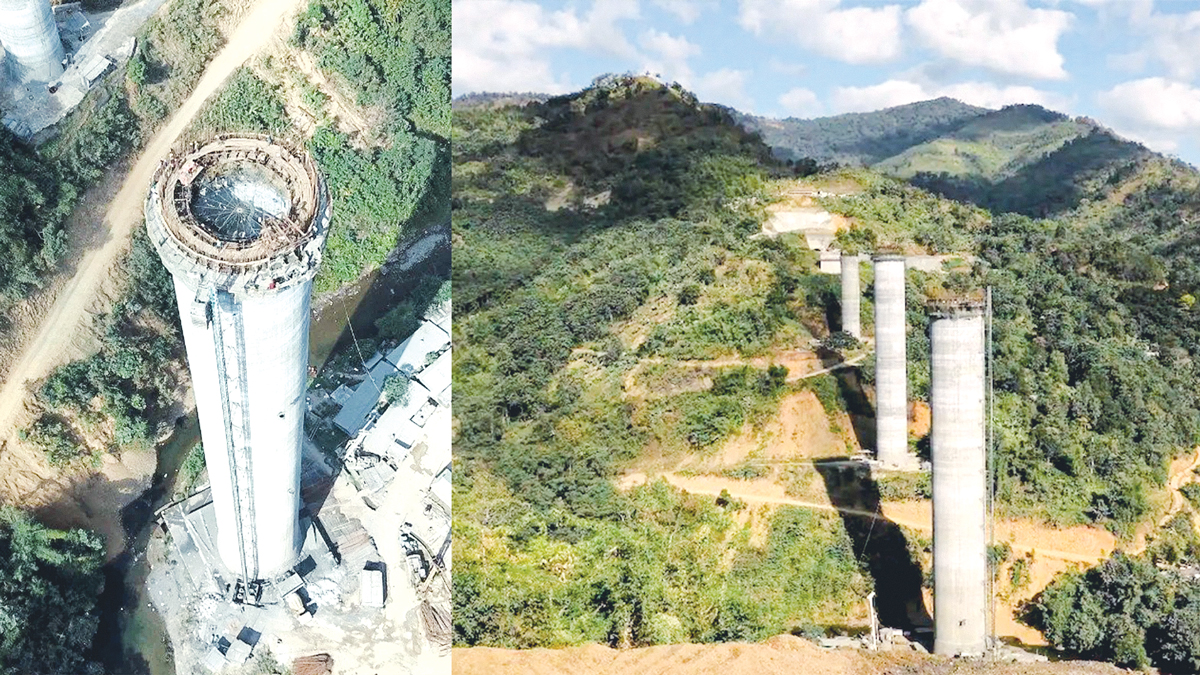We See A Slew Of Demand Trends Such As Employment Of RCC And Steel Structures.

Nikhil Jain
CEO, Qubik Infra
How do you assess the current trends in bridges and flyover constructions in India?
Prefabrication and modular construction are becoming increasingly popular in the industry, and for good reason. Because several components are built concurrently at different locations, a project takes comparatively less time to complete, allowing companies to meet the growing demand for flyovers in traffic-congested areas. A by-product of the trend is the use of enhanced technology. Steel replaces RCC structures, reducing the weight of the flyover while maintaining its strength. Consequently, the cost of construction is reduced. Another significant transformation has been the heightened construction of flyovers for the movement of trains for the free movement of the general public. This has elevated the living standards of people in the cities while shortening the distance between places.
What are the demand trends and opportunities for infrastructure companies?
The escalating urbanisation has made cities more populated than ever, which has resulted in traffic congestion. This creates an overwhelming demand for flyovers and elevated roads to facilitate better connectivity and a seamless commute. The required magnitude of the bridges and flyovers and the responsibility of maintenance warrant a public-private partnership. For this, the government is encouraging private players by providing special incentives to partner in infrastructure development through the Build-Operate-Transfer Model. Under this popular model, firms are responsible for maintaining roads and bridges constructed by them for 15 years. At the end, ownership is transferred to the government. This initiative ensures that companies are accountable for the maintenance of their projects and improving the quality of their infrastructure. Superior quality bridges and flyovers will make the most remote regions of the country accessible to citizens, which will benefit Tier 2 and Tier 3 cities and villages greatly.
Apart from the above development opportunities, we see a slew of demand trends such as employment of RCC structures and steel structures. RCC stands for reinforced cement concrete and is characterised by superior radiation absorption. Known for its ability to withstand pressure, it is used in water-retaining structures like tanks and earth-retaining structures such as abutments and retaining walls as well as marine and atomic structures. The Bureau of Indian Standards (BIS) is also undertaking a comprehensive revamp of design norms and quality benchmarks across various sectors in India aimed at enhancing standards and quality in collaboration with various institutions. It uses the updated ‘probabilistic seismic hazard map’ to estimate the seismic load for use in engineering design processes of India is one of the first tasks, which will lead to new seismic design codes.
Additionally, design codes for infrastructure elements like pipelines and buildings are being modernized. This effort involves the participation of the Indian Institutes of Technology (IITs) and the National Institute of Technology, among others. The goal is to create more stringent standards and ensure the country’s infrastructure is better prepared for natural disasters and increased industrial capacity.
Can you give us an overview on the company’s latest bridge projects?
In Manipur, we are currently engaged in the construction of a significant project involving the assembly of a total of 140-tonne steel prefabricated bridges. To accomplish this, we have set up fabrication facilities in Kolkata and Faridabad, from where the components will be transported to Manipur. In fact, we have already delivered 10 bridges as part of this initiative, successfully, one of them being the construction of the tallest pier railway bridge in the world (Noney Bridge).
Our commitment to the development of small-scale and rural infrastructure in India is unwavering. We are actively seeking additional projects under the Pradhan Mantri Gram Sadak Yojana (PMGSY) to further contribute to the growth and well-being of rural communities across the country. Furthermore, we are in advanced discussions with the state of Meghalaya for the production and installation of 150-tonne bridge components. These endeavours are a testament to our dedication to enhancing connectivity and infrastructure development in the northeastern region and beyond.
What are the latest technologies and methods adopted for quality, safety and speed in construction?
The introduction of AI, smart equipment and materials are transforming the construction industry to the next level. Many of these latest technologies which are being used in India are at par with international standards. Shape Memory Alloys (SMAs) such as gallium have been a true game changer in building earthquake-resistant buildings which can withstand tremors of huge magnitude while keeping the integrity of the building intact. Secondly, AI-powered predictive analysis technology has been a boon for analysing risk at the construction site and making appropriate action counter plans. The technology also aids in strategizing the fastest and most reliable process for construction. When it comes to safety, construction tools and exoskeletons now come equipped with sensors that protect the construction crew from calamities. Additionally, drones help in monitoring the progress of the process and maintain safety standards.
What is your market outlook and future plans in the bridges and flyover market?
Our market outlook and future plans are heavily reliant on infrastructure development in rural, Tier 2 and Tier 3 cities. We are committed to working on projects with budgets of less than Rs 100 crores, with a focus on improving rural roads, state highways, and building critical infrastructure such as connecting bridges and railway bridges. This is because we believe that good quality work in the development of small-scale work, whether it is civil buildings or small bridges, is important. Our aim is to contribute to the growth and connectivity of these regions, ensuring that they have the necessary infrastructure for a brighter future. Thus, our focus is to make these robust bridges with steel while reducing cost and construction time. We have received a 32-bridge contract from PMGSY Manipur for this purpose alone, and we are in discussions with other state governments such as Nagaland and Meghalaya for other projects.

We plan to continue our pursuit of sustainable development marked by quality and brilliance with the use of advanced engineering software and design tools such as AutoCAD, which makes designing simple, efficient, and elegant at the same time. Furthermore, all our previous bridges were 140 tonnes in weight, and we intend to carry on the legacy using our prefabrication techniques. Moreover, the market also favours the use of high-strength and lightweight materials, given their reliability and affordability.







